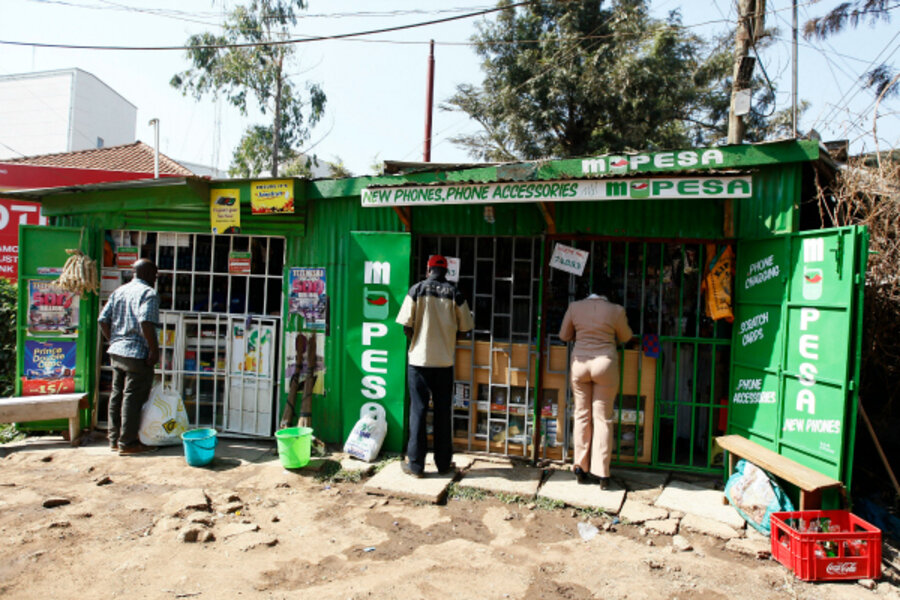How mobile money fights malnutrition in Guatemala
Loading...
When a natural disaster or humanitarian emergency strikes, food is usually distributed in the form of rations given to people standing in long queues.
Getting cash and food aid to remote rural communities after a natural disaster like an earthquake or a hurricane is logistically complex, expensive, and takes time.
But in recent years mobile phone technology has begun to change that, allowing aid agencies to deliver money electronically as part of their response.
Known as mobile money, electronic currency can be stored on a mobile phone and, using a personal identification number, converted into cash at designated points and transferred to other mobile phone users.
In Haiti, for example, mobile phone networks were used to transfer cash to families affected by the 2010 earthquake, and cash is increasingly being handed out in this way to those hit by natural disasters, rather than food aid.
“The most effective way to help people in emergencies is to get cash to people, especially when infrastructure, the roads and bridges, have been destroyed,” said Miguel Angel Avendano, head of financial services at Tigo Guatemala, a telecom brand owned by the holding company Millicom.
“Mobile money is a tool to disperse payments safely and quickly to the most affected and remote communities. It’s an immediate way to send money, like a text message,” he said.
In Guatemala, which has high levels of child malnutrition, families facing or experiencing hunger are now receiving cash in this way on their mobile phones, thanks to a project in which mobile phone operator Tigo and the charity Oxfam in Guatemala have teamed up to help families in the eastern province of Chiquimula, Avendano said.
“Chiquimula is one of the areas worst affected by drought and malnutrition in Guatemala. There are food shortages because of poor harvests caused by the drought and families go hungry,” he told Thomson Reuters Foundation in a telephone interview from the capital, Guatemala City.
“Oxfam carried out a census to determine which families were most vulnerable and affected by malnutrition. These families were given a sim card and Oxfam sends the cash transfer on their mobile phones.”
Oxfam has so far given over $282,000 to 1,700 families in Chiquimula province using mobile phones, he said.
Most families spend the cash on staple foods like beans and maize to feed their families, on medicine and anything else they need to help them cope with and alleviate hunger, Avendano said. The mobile money improves their ability to cope with crises.
Roughly half of Guatemala’s children suffer from chronic malnutrition, according to 2009 UNICEF estimates, one of the world’s highest levels of child malnutrition.
This is because many families are too poor to buy enough food all year round – the result of a combination of unequal land ownership, intermittent droughts and erratic rainfall, high food prices, few jobs, and low wages in rural areas.
Malnutrition disproportionately affects the Maya indigenous people, many of whom live in poor rural areas.
In the drive to hand out mobile money, “the focus is on low-income families who rely on cash day to day to survive,” Avendano said. ”Not getting hold of cash during natural disasters, including a drought, can mean a family falls from poverty to extreme poverty. [Mobile money] allows families affected by drought, particularly those who don’t live near a bank, to get access to cash and use it immediately to buy food.”
A previous case when mobile money was used to tackle malnutrition was a Tigo-Oxfam project that sent cash transfers to mobile phone users in families who had lost their homes in a 2012 earthquake that hit the Guatemalan mountain town of San Marcos, killing around 40 people.
Tigo and Oxfam plan to ramp up the use of mobile money in Guatemala, which is vulnerable to climate change and natural disasters. They are working to create a mobile money service that would deliver aid in cash to affected communities within 48 hours of a natural disaster occurring.
• This article originally appeared at Thomson Reuters Foundation, a source of news, information, and connections for action. It provides programs that trigger change, empower people, and offer concrete solutions.







